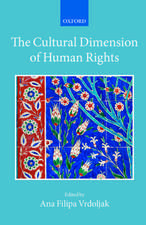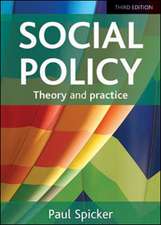European Populations: Unity in Diversity: European Studies of Population, cartea 6
Editat de Van Der Kaaen Limba Engleză Paperback – 29 iul 1999
Din seria European Studies of Population
-
 Preț: 231.11 lei
Preț: 231.11 lei - 15%
 Preț: 644.49 lei
Preț: 644.49 lei - 18%
 Preț: 952.57 lei
Preț: 952.57 lei - 18%
 Preț: 951.47 lei
Preț: 951.47 lei - 18%
 Preț: 953.65 lei
Preț: 953.65 lei - 18%
 Preț: 957.44 lei
Preț: 957.44 lei - 15%
 Preț: 640.88 lei
Preț: 640.88 lei - 24%
 Preț: 799.81 lei
Preț: 799.81 lei - 18%
 Preț: 960.78 lei
Preț: 960.78 lei - 15%
 Preț: 635.80 lei
Preț: 635.80 lei - 15%
 Preț: 649.06 lei
Preț: 649.06 lei -
 Preț: 395.25 lei
Preț: 395.25 lei - 18%
 Preț: 951.29 lei
Preț: 951.29 lei - 18%
 Preț: 895.27 lei
Preț: 895.27 lei -
 Preț: 393.35 lei
Preț: 393.35 lei - 15%
 Preț: 593.91 lei
Preț: 593.91 lei - 15%
 Preț: 644.49 lei
Preț: 644.49 lei -
 Preț: 415.18 lei
Preț: 415.18 lei - 18%
 Preț: 946.10 lei
Preț: 946.10 lei - 15%
 Preț: 640.88 lei
Preț: 640.88 lei - 18%
 Preț: 951.29 lei
Preț: 951.29 lei - 15%
 Preț: 643.34 lei
Preț: 643.34 lei -
 Preț: 383.12 lei
Preț: 383.12 lei -
 Preț: 383.12 lei
Preț: 383.12 lei - 15%
 Preț: 580.79 lei
Preț: 580.79 lei
Preț: 554.98 lei
Preț vechi: 693.72 lei
-20% Nou
Puncte Express: 832
Preț estimativ în valută:
106.19€ • 111.27$ • 87.79£
106.19€ • 111.27$ • 87.79£
Carte tipărită la comandă
Livrare economică 07-14 aprilie
Preluare comenzi: 021 569.72.76
Specificații
ISBN-13: 9780792358398
ISBN-10: 0792358392
Pagini: 216
Ilustrații: XVI, 197 p. With online files/update.
Dimensiuni: 156 x 244 x 11 mm
Ediția:Softcover reprint of the original 1st ed. 1999
Editura: SPRINGER NETHERLANDS
Colecția Springer
Seria European Studies of Population
Locul publicării:Dordrecht, Netherlands
ISBN-10: 0792358392
Pagini: 216
Ilustrații: XVI, 197 p. With online files/update.
Dimensiuni: 156 x 244 x 11 mm
Ediția:Softcover reprint of the original 1st ed. 1999
Editura: SPRINGER NETHERLANDS
Colecția Springer
Seria European Studies of Population
Locul publicării:Dordrecht, Netherlands
Public țintă
ResearchCuprins
1. Europe and its population: the long view.- 1.1. The flawed goddess.- 1.2. Time and scale: the long past.- 1.3. Europe: concepts and limits.- 1.4. Time, space, and population: the long future.- 1.5. From the pantheon.- 2. Les nouveaux modes de planification de la famille en Europe.- 2.1. Les changements les plus significatifs.- 2.2. Les perspectives.- 3. Who is working in Europe?.- 3.1. From work to non-work: an introduction.- 3.2. General frame of reference.- 3.3. Differentiating jobs and workers.- 3.4. Individual and household features in relation to the labour market.- 3.5. The changing pattern of the labour life cycle.- 3.6. Future trends and foreseeable problems.- 3.7. A brief conclusion.- 4. Migration pressures on Europe.- 4.1. Comment on a definition which cannot be avoided.- 4.2. Objectives and contents.- 4.3. Basic trends: the global context.- 4.4. Basic trends in the old continent: can we really speak of migration pressures on Europe?.- 4.5. Issues of the late 1990s: a review of challenges faced by Europe.- 4.6. Conclusions: does Europe still need migrants?.- List of authors.

















